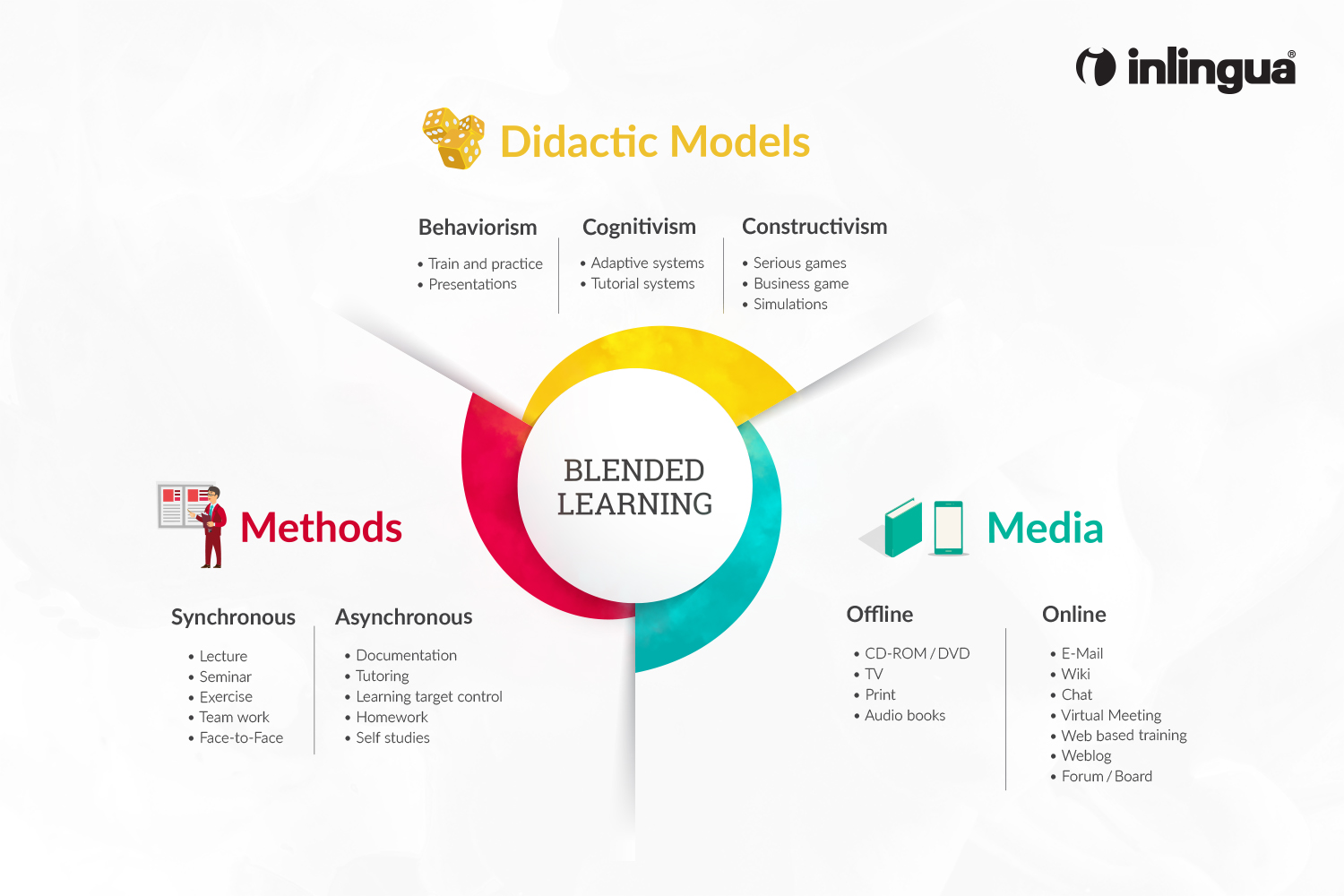The global pandemic caused by the COVID-19 virus has triggered a surge in digitalization, which also affects language learning. The term e-learning is suddenly on everyone’s lips. Now as we return once more to a semblance of normality, it remains to be seen how much of these new habits will remain after the crisis. Many language learners (and trainers) are looking forward to resuming face-to-face teaching in the familiar environment of the language center.
However, it can already be said with certainty that in the future so-called "blended learning" will become even more important. But what exactly is blended learning and what are the benefits both for learners and trainers? Blended learning is an approach to education that combines online educational material and interaction with traditional trainer led, place-based classroom methods. Blended learning has existed for many years in a wide variety of forms and manifestations and there are always discussions among educators as to what exactly is meant by it.
Claudia Wiepcke brought light into the darkness back in 2006 with her comprehensive overview, showing different aspects of didactic models, methods and media. A supplement and update were both provided in 2015 by Stefan Bieletzke.

Based on Claudia Wiepcke (2006) and Stefan Bieletzke (2015)
In blended learning scenarios, three forms of activity can be distinguished or combined with one another (cf. Alonso, López, Manrique & Viñes, 2007):
- Self-directed e-learning: This is a setting, where learners can determine the time, intervals, pace and location of their learning activities themselves (“learning anytime and anywhere”).
- Live e-learning: Synchronous forms of e-learning, for example lectures as webcasts or working in a virtual classroom at a fixed time. This enables learners to ask questions to the lecturers in real time or to exchange information with other course participants.
- Traditional face-to-face teaching: Lectures, seminars, exercises, discussions and exchanges take place in the lecture hall, laboratory or seminar room and open up face-to-face interactions with teachers and fellow students.
There is disagreement about how much or how little online teaching belongs in the blend. Various authors agree that the percentage of online/offline content is not as important as the pedagogical design, timing and sequencing of activities to create a cohesive learning experience (Dziuban, Moskal & Hartman, 2005).
Thanks to a balanced mix of online and offline training, it is possible to take advantage of both methodologies, among which the following stand out:
Benefits for learners:

- Blended learning offers the learner convenience and flexibility; they have the ability to control their learning pace and learn remotely.
- Academic research suggests that through the use of more diverse means of information, blended learning gives learners a more comprehensive understanding of the course content.
- Because blended learning allows learners to interact with instructors and fellow learners, social learning is supported.
Benefits for organizations:

- Blended learning reduces face-to-face training costs, such as travel, accommodation, and printed training materials.
- Companies can use varying eLearning methods, such as virtual classroom, online learning in LMS systems, gamification, etc., which result in increased learner engagement.
- Because blended learning is a more efficient and cost-effective way to train, you’ll see a quicker and greater return on investment.
- It’s also easier to track exactly who has, or hasn’t, completed training
Blended learning pitfalls:

Now that you know what blended learning is and we have piqued your curiosity, we would like to address some hurdles that need to be considered.
- The most important pitfall you’ll need to avoid is using an LMS that doesn’t meet your needs. You’ll need an LMS suitable for language training to manage and deliver your blended learning strategy, including the integration of webinar/video conferencing software.
- Keep in mind that what works for in-person training may not necessarily work for online training. You should not automatically assume existing courses are ready for online distribution. Analyze who your learners are, identify what they need to know, review your course content, and use this analysis to formulate a blended learning strategy.
- If switching from exclusive face-to-face learning, take your time when incorporating blended learning into your learning strategy. Starting slow not only enables you to assess what is and is not working from a content perspective, but also gives your learners time to adapt gradually to the blended learning concept.
- Of course, it’s important that blended learning isn’t used just for the sake of it. Once you have identified your learning goals, you can think about how each goal could be achieved in an online and/or offline setting.
By Christian Scheidegger, Pedagogical Manager, inlingua International Ltd.
Please click here, to consult further sources in German.

inlingua Plus offers a powerful tool that works with a fully integrated ZOOM or Webex host setting for Virtual Classroom. A vast variety of interactive online activities match the individual needs of your learners. Would you like to know more? Click here.

